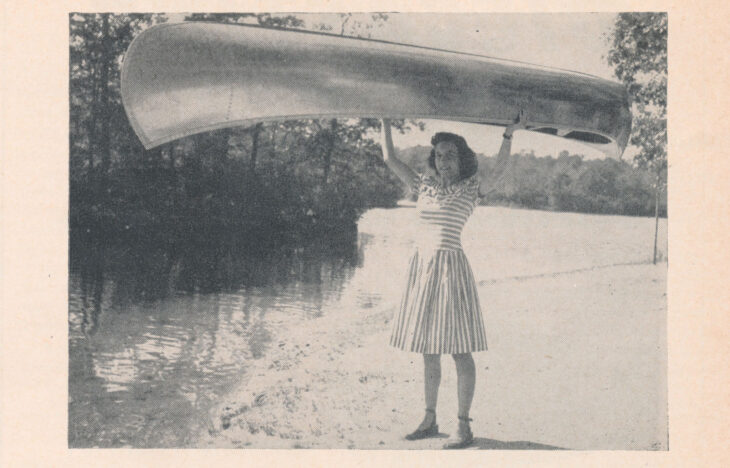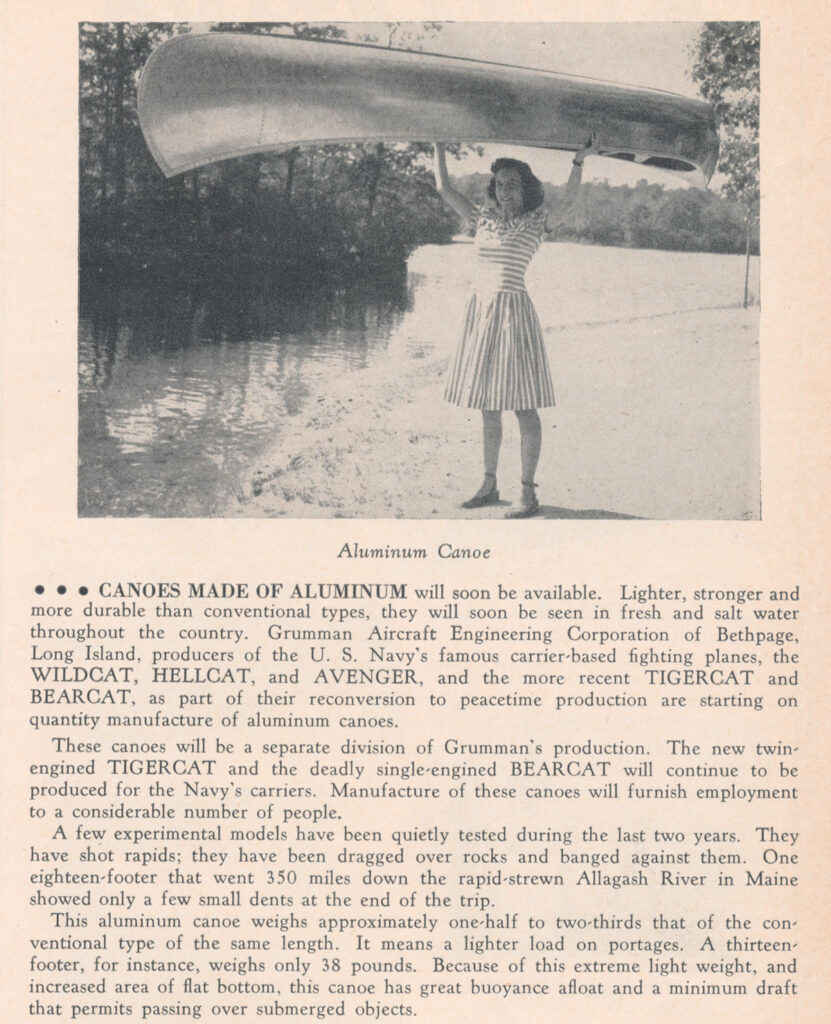By Rose Eaton, Light Metal Age.
The aluminum canoe has its place in the hearts of many Americans, who enjoyed childhood summers on rivers or lakes, paddles clanging against the warm metal boat, soaking up the rays of the sun. If they ever wondered why the canoes were made of aluminum, it was partially due to an abundance of the light metal post World War II.
In 1944, Grumman Aircraft Engineering Corporation (now Northrop Grumman), headquartered in Bristol, PA, was a major supplier of aluminum aircraft for the U.S. Navy during the war. When the war was over, companies like Grumman, which had extensive knowledge of working with the metal, and Alcoa, which supplied it, searched for new markets to serve.
William Hoffman was the aircraft company’s chief tool engineer at this time, and after a canoe trip in the Adirondacks lugging around his heavy wooden canoe, he wondered if he could design a lighter canoe out of aluminum. Upon returning from vacation, Hoffman proposed the aluminum canoe idea to Grumman management, and the company agreed to move forward on the invention after a market survey showed promising results. Grumman shared Hoffman’s design with Alcoa, which created a specific aluminum alloy for the canoes and recommended Russell Bontecou, a sportsman who had worked with Alcoa on another canoe design prototype, as a consultant.
At the same time, Bontecou, an avid fan of canoeing river rapids, had separately been working on his own design for a canoe, using Alcoa aluminum. According to Bontecou’s daughter, artist Lee Bontecou, her father liked to run the rapids in his battered wood-and-canvas canoe, but if he hit a sharp rock he would have to stop and patch the leak, a real inconvenience and potential safety hazard. He reasoned that an aluminum canoe would be more durable and built his own prototype by stretching sheets of Alcoa aluminum over a frame.
The official stories differ of who was ultimately responsible for the design of the first aluminum canoe, Hoffman or Bontecou. Either way, both men were an integral part of bringing aluminum canoes into mass production.
The final Grumman canoe design developed by both Hoffman and Bontecou entailed stretching sheets of aluminum over a mold and riveting the gunwale, bow, and stern plates in place. The pilot model was 13 ft, and weighed only 38 lbs, a little more than half the weight of the typical wood or canvas canoes that were the standard of the time. Besides the weight savings, there were additional advantages to using aluminum in this application. Watertight compartments at the stern and bow contributed to the buoyancy of the new canoe. Furthermore, the sturdy metal boats were cheaper and more durable than their competitors.
Following their development, Grumman hired Bontecou to travel the country, pitching the sale of these new hardy canoes. They were ideal for businesses that rented recreational water equipment because they didn’t rot (like wood and canvas), and any dents acquired could easily be pounded out. By 1947, Grumman was the largest supplier of canoes domestically.
Today, the internet is rife with debates on whether aluminum canoes fit the bill when compared to the modern molded plastic, composite, and fiberglass versions. Its detractors argue that the boats are too hot in hot weather and too cold in cold weather, lack performance when compared to competing material canoes, are slower, etc. Conversely, the aluminum canoe certainly still has its fans who boast that the metal watercraft can last decades (as aluminum is non-corrosive) even if stored outdoors, and that they are stable and durable for hardcore water sports enthusiasts as well as the novice vacationer who needs a reliable floatation device.
These days there are an abundance of materials to choose from, when considering the right canoe to purchase. Despite the plethora of new options, aluminum canoes have proven that they hold up to the test of time.


